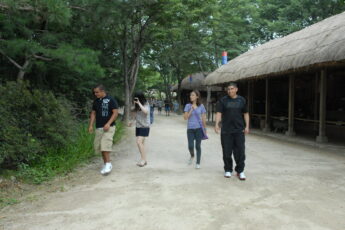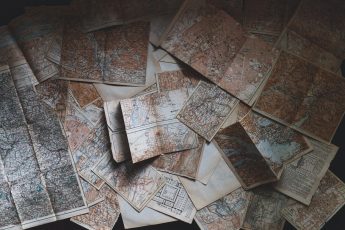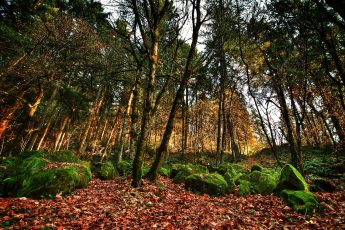
When orienteering, it is important to have the right map. Orienteering tips include thumbing the map, Pace-counting, and retracing your steps. By following these tips, you will be more successful and avoid losing your way. You’ll also have a better idea of where you’re going and how far you need to go. Once you learn these tips, you’ll be ready to tackle any orienteering challenge.
Orienteering map
Orienteering maps are essential for navigating the course. To do this, you must be able to visualise the map and interpret contour lines. The basic land form of a region does not change much, despite its vegetation. You must also learn to spot the main features of the course. This article will provide some helpful tips to master the maps, whether you’re new to the sport or a pro.
Orienteering maps are very detailed. They are often at a scale of 1:10,000, which is five times larger than the scale of an OS map. This makes it important to learn the different colours. White space represents runnable forest, while black stands for man-made features. You should also learn to read the maps’ top and bottom rows. There’s a good website with a step-by-step guide on how to read an orienteering map.
When reading an orienteering map, make sure that you’re seeing the same features as you’re seeing on the ground. This way, you’ll know where you’re going. You’ll also be able to quickly determine your approximate location. A good map will also show you the way to a control. If you’re unfamiliar with orienteering, there’s a chance it’s on a different course.
Another good way to use your map is to fold it. This way, you’ll be able to see where you’re going. Also, you’ll be able to easily find a flag when you see it on a map. If you’re unfamiliar with how to use a map, this will be a great help. You can use this tip to improve your orienteering skills.
Using a map with a compass is another great tip. It will help you navigate in an area that is unfamiliar to you. This way, you’ll be able to identify a route that you have to follow without having to worry about getting lost. Besides, this tip will help you avoid the worst mistakes in orienteering. You’ll be able to get a better idea of how to use a map when you’re on a new course.
Thumbing the map
A crucial orienteering tip is to thumb the map while navigating. When you hold the map with your thumb next to your current location, you will automatically focus on the correct place without having to use the map key or navigate by sight. Thumbing the map also helps you recognize the different symbols on the map. These symbols are helpful for making the right decisions and for identifying where you are in relation to the next control.
Thumbing the map is a simple technique for tracking your location and reading information on the map. It is a helpful technique that will allow you to get a better idea of your current location and prevent you from overrunning a control. This technique is also useful when you’re trying to find the next checkpoint on your route. Once you know where you’re going, you can adjust your thumb to match the new location.
Another important orienteering tip is to learn how to thumb the map. This is a crucial skill because it allows you to see where you’re headed in a map at any given time. Thumbing the map is a way to orient yourself as you run. The compass is also helpful in this regard, since you can line up the north-lines of the map with the needle of the compass.
Using this technique will help you find your location quickly. As you’re moving through a map, you’ll need to refold it every few minutes to position your thumb on a known location. With practice, you’ll find that thumbing the map is a faster process and will help you stay on top of the competition. If you want to learn how to thumb the map, check out the United States Orienteering Federation’s website for information about local meets.
Thumbing the map can be an important orienteering tip. In orienteering, it is important to match your physical effort with the demands of the course. You may be running for five seconds, but that’s not a good trade-off. A higher-level orienteer will be able to walk quickly up a steep hill while maintaining contact with their map.
Pace-counting
Pace-counting is a good strategy to follow if you want to find your target point faster. Using a map and counting paces can give you an accurate reading of your pace. It also allows you to think about other aspects of the race. For example, if you are trying to find a control in less than a certain distance from your starting point, you can use pace-counting to ask yourself “what is happening?”
Pace counting is an important skill for orienteering. You must estimate the distance to the next control and know how long it will take to reach it. Pace-counting is essential for adventure races, as the distances given by USGS maps are not always accurate. You can also use pace-counting orienteering tips when you’re walking around obstacles at night. For more information, read “Pace-Counting Orienteering Tips.”
As a beginner, pace-counting is useful when the course is not particularly clear and you’re in a bramble-covered area. Pace-counting helps you to find controls more easily and avoid getting lost. The best way to do it is to start slowly and keep your eye on the map. As you gain experience, you can increase your pace. But remember to stay close to the map and to be patient as you navigate through the course.
To calculate the distance traveled, measure every 100 meters and count each stride with a compass. Most baseplate compasses have a centimeter scale along one edge. Line the scale between two features on the map and estimate the distance to that feature. Once you’re done, you can measure the distance to the object using a compass. Once you’ve got the hang of it, you can write down your paces on a quick reference card and use it later.
Retrace your steps
When orienteering, it’s important to know when to retrace your steps. Most maps depict parks with well-defined boundaries. However, some maps don’t. If you’re unsure of your location, retrace your steps at the last place you were sure you’d be. Similarly, if you’re unsure of your route, stay on the road, make yourself easily visible and wait for searchers to find you. It might be counterproductive to continue moving, since a longer distance could prove to be more difficult to retrace.
In orienteering, it’s important to remember to retrace your steps and read the contours on the ground and maps. Beginners might think of contours as spaghetti, so they’ll often run the wrong way. Even experienced orienteers can go wrong sometimes. For example, they may run uphill instead of downhill, resulting in a muddy trail.
Using a topographic map is an excellent way to get a better understanding of your surroundings. The contours will help you avoid getting lost in unfamiliar territory. These lines indicate the height difference between points on a map. As you get more experienced, you’ll understand how important contours are for orienteering. You can download topographic maps from the National Resources Canada or United States Geological Service.
Sprint orienteering is a fun way to learn how to navigate an unfamiliar area. Courses are often one to three kilometres long, and they are typically run on intricate street areas. Unlike other events, sprint orienteering maps are much larger in scale. Sprint orienteering maps also show intricate details, such as fences, canopies, and uncrossable obstacles.
aeorienteering.com is reader-supported. When you buy through links on our site, we may earn an affiliate commission.




